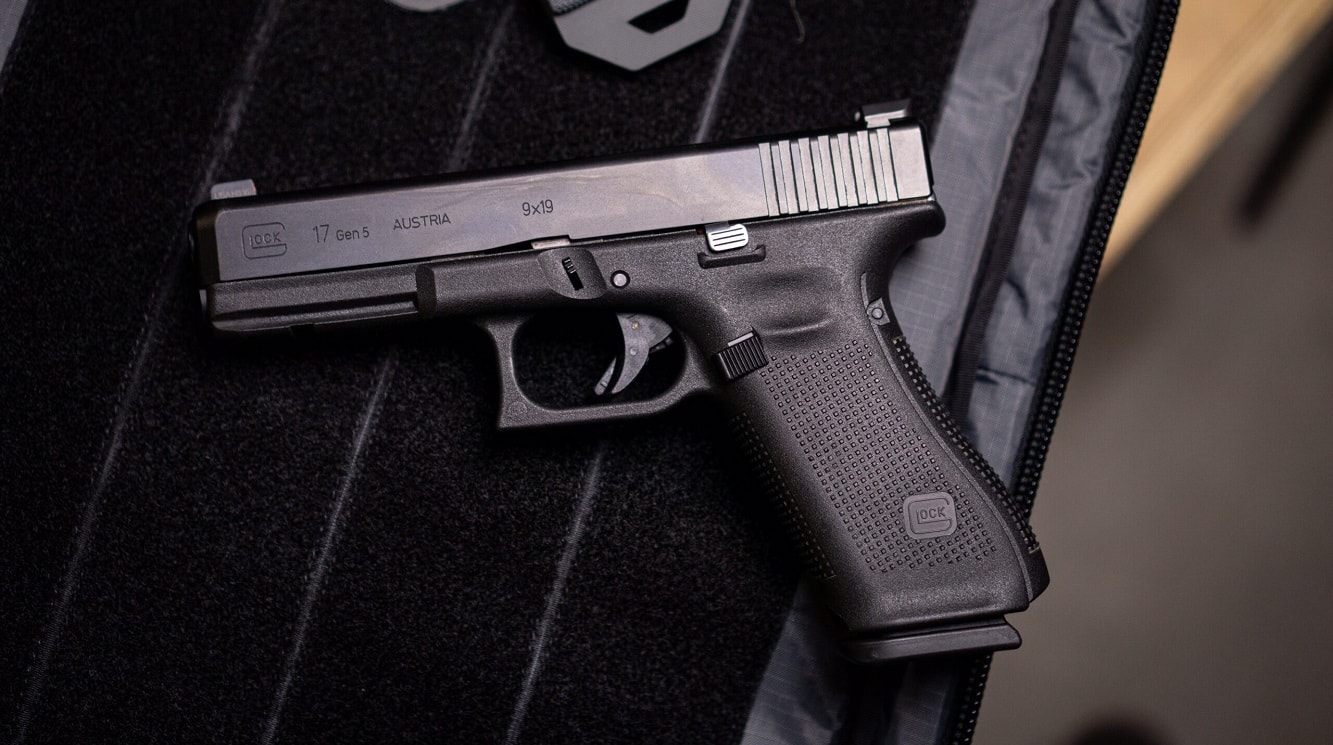Glock Numbering System - Confused by all the Glock models? You are not the only one but we are here to guide you!
The Glock is the most-issued service pistol of the modern era, which is pretty impressive for a company founded to manufacture firearms. Gaston Gluck had no experience making guns, but he had experience making polymers. He brought together the best European firearms experts, prototyped the Glock 17 in 1982 and the rest is glorious Austrian history.
Glock Numbering System

Glock pistols are polymer-framed, semi-automatic, short-recoil operated, bolt-action, bolt-action pistols. Well, there are a lot of them - the rimfire G44 is an assault rifle and it's the only gun designed to break. Glock pistols come in a variety of different calibers and different types. They weren't the first polymer frame pistols, but they were the first wildly successful polymer pistols.
Glock 43: Everything You Need To Know– Bravo Concealment
The G17 was the first model produced and built to fill a need in the Austrian Army. The specific needs of the Austrian military have guided the development of the weapon and define the Glock pistol to this day. The Austrian Army needed a safe, lightweight, high-capacity, and reliable semi-automatic pistol, and the Glock filled that need.
Glock has a simple way of naming their guns. Each model is assigned a number after the letter G, which stands for Glock. The numbers have nothing to do with the weapon itself and may seem arbitrary - for example, the G45 is not a .45 caliber pistol, it's actually a 9mm.
Numbers are assigned to designs as they are launched, not in the order in which they are released. So while the G20 and 21 started to develop before the 22 and 23, the 22 and 23 were released earlier.
The G17 hit the streets at a time when manual safety devices on firearms were the norm. The Glock's classic plastic didn't have an available safety, but that didn't mean they were unsafe. Glock refers to its pistols as Glock Safe Action pistols which refers to the three independent integrated safety devices.
Meet The Glock 19x: The Gun The Us Military Should Be Using?
The trigger guard is that famous little douchebag that sits in the middle of the trigger. Your finger depresses the trigger safety while pulling the trigger, so without activating the trigger safety, the trigger cannot be pulled.
The firing pin safety prevents the firing pin from moving forward when the firing pin is cocked. When the trigger is pulled, the trigger bar pushes the firing pin out of the safety and out of the way. If you release the trigger before firing, the firing pin safety snaps back into place automatically.
DropSafe is a device that does exactly what you think. If you drop the gun, make sure it can't fire. As you pull the trigger, the trigger bar lowers the safety ramp and allows the striker to be released.

Glock is currently in its fifth generation. The new generation comes as Glock makes changes, both externally and internally. There is no timeline when the Glock generation ends or begins, they are improved as needed.
The History Of Glock
The release of a new generation does not necessarily mean that the previous generations have disappeared. Most are produced with newer and older Glock generations.
There are also pistols that exist outside of the Glock-specified models. Some weapons are all over the place and may lack racial markers to determine which race the weapon belongs to. Some pistols are also generation split, more commonly between Gen 2 and Gen 3 pistols. Glock aficionados often refer to these as Gen 2.5 pistols.
Gen 1 - The first Glocks on the market. Plain and simple: these are guns that work. Gen 1 consists entirely of one pistol, the Glock 17.
Gen 2 - Glock added a variety of sizes and calibers with Gen 2 models. A metal plate with a serial number was inserted, the guide bar system became a one-piece design, checkering was added to the front and rear of the grip, and the base of the magazine was changed.
Glock G42: A Remarkable Handgun
Gen 3 - The third generation is where the rail became a standard option on larger guns from sub-compacts. Fingers are added to the hand, and scallops are cut into the left and right sides of the frame to serve as rings.
Internal changes include a cross pin above the trigger pin to reduce stress on the trigger lock. Extractor also now pops up when the camera is loaded and acts as a loaded camera indicator.
Gen 4 - With the Gen 4, Glock shortened the pistol grip slightly and added a modular recoil system to change the size of the grip. The grip was also more aggressive, and there was a return for the left side of the magazine release.

The Gen 4 also added a dual-spring recoil bar assembly that reduces recoil feel. Gen 4 was also the introduction of MOS guns which allowed for easy optical mounting.
The Warrior Glocks
The latest generation of Glock is the Gen 5. These guns have seen the removal of finger grooves, flared magazines for faster reloading, a high relief cut on the box guard for a superior grip, and a slide lock. now Intermediary
Additionally, Glock added a new match-quality barrel to the rifles, and the cross pin above the trigger guard was also removed.
Now that you have the basics down, we can move into specific models, categories and more in Part 2!
Travis Pike is a former Marine machine gunner who served with 2nd Bn 2nd Marines for 5 years. He deployed to Afghanistan in 2009 and again with the 22nd MEU (SOC) in 2011 for a record 11 months at sea. Travis has trained with the Romanian Army, Spanish Marines, Emirati Marines and the Afghan National Army.
Glock 19x 9mm Pistol
©MTC Holsters, LLC and CrossBreed Holsters Blog, 2020. Unauthorized use and/or copying of this content without express written permission from the author and/or owner of this site is strictly prohibited. Excerpts and links may be used, provided full and clear credit is given to Travis Pike and CrossBreed Blog with appropriate and specific direction to the original content. Prior to the release of the fourth generation, Glock was not officially recognized by more than model numbers, contributing to the idea that "A Glock is a Glock is a Glock - they're all the same". But early collectors noticed the differences and informally settled on three major iterations, or "breeds," by which to classify. The name has become so common that Glock followed suit with the release of Gen 4 in 2008 and their promotional literature now features the previous Gens in some places.
The images below will help you clearly identify which generation your Glock belongs to, but note that there is a large amount of overlap as models are slowly transferred. Also, 3rd gen guns are still in production due to California handgun restrictions, so you have a gen 5 gun that is actually older than your gen 3! The notes on the pictures indicate the main characteristics that are the same throughout the species, but small changes in markings and internal parts can be found at different intervals - and sometimes back and forth - in the same general. Major frame modifications, with many parts being interchangeable in two or more, but some modifications only last a short time in one generation.
The 1st generation was one of constant change. The initial design, while reliable, was still under development. The only consistent feature is the grip design that wraps around the entire handle (not checking the front or back strap). It has a smooth feel compared to later jeans and is considered a "pebblestone texture" by collectors. The first guns featured a thin stainless steel barrel with a Parkerized finish that was introduced earlier (not after the AD prefix) and the barrel wall thickness did not increase after the AN prefix. There are also many changes to the magazine, case, and small internal parts. All guns will have Austrian proof marks, but will not have the firing location or number of marks. Most early (pre-American) rifles and those made for European markets do not have a serial number plate on the frame. Many early rifles were also equipped with sights called "weekend sights" because of their weakness. Standard (fixed) locations are also valid, although the Target version fetches a premium. All frames had a half-moon relief at the bottom of the front strap, except for the few 19's that were made.

2nd Gen is what many new collectors or even inexperienced dealers will refer to as "Gen 1". The confusion stems from two factors: 1. 1st Gens are very rare and many casual observers have not seen them before. 2. Several models were introduced in the 2nd Gen line and some consider it "1st Gen" because it is the first issue of that particular model. To clear things up, if you have a model 20 or older, you have a Gen 2 Glock even if it's the first version.
Disassembly Guide: Glocks
Dental burs numbering system, tire numbering system, sop numbering system, dental teeth numbering system, document numbering system, cattle numbering system, project numbering system, orthodontic tooth numbering system, iso numbering system, levis numbering system, cattle tag numbering system, equipment tag numbering system
0 Comments